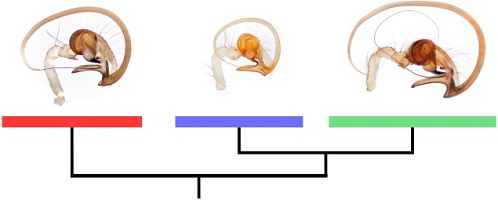Adult forms of y-larvae (Pancrustacea: Facetotecta) remain unknown despite discovery more than 100 years ago and global occurrence. Likewise, the evolutionary history of y-larvae remains almost entirely unknown due to a critical lack of molecular, morphological and ecological data. To rectify this situation, we developed a novel rearing, imaging, and DNA extraction protocol that maximises retrieval of molecular and morpho-ecological data layers from single larval specimens. Through the design of new primers and a careful evaluation of best practices, we pave the road for finally unravelling the evolutionary history of this enigmatic group of animals. (Image credit: J. Olesen.)

Invertebrate Systematics
Volume 38 Number 3 2024
The debatable identity and delimitation of spider species of Mastigusa have confused the taxonomic status and distribution. Broad sampling, and morphological and molecular techniques were used to revise the species’ statuses. Three Mastigusa species were recircumscribed and redescribed, and the distributions updated. Based on a reexamination of type material, Mastigusa diversa O. Pichard-Cambridge, 1893 is revalidated. Mastigusa shows strong ecological plasticity, and understanding the species delimitations and distributions will unravel drivers of extreme lifestyles such as myrmecophily and cave-dwelling. (Image credit: F. Castellucci.)






